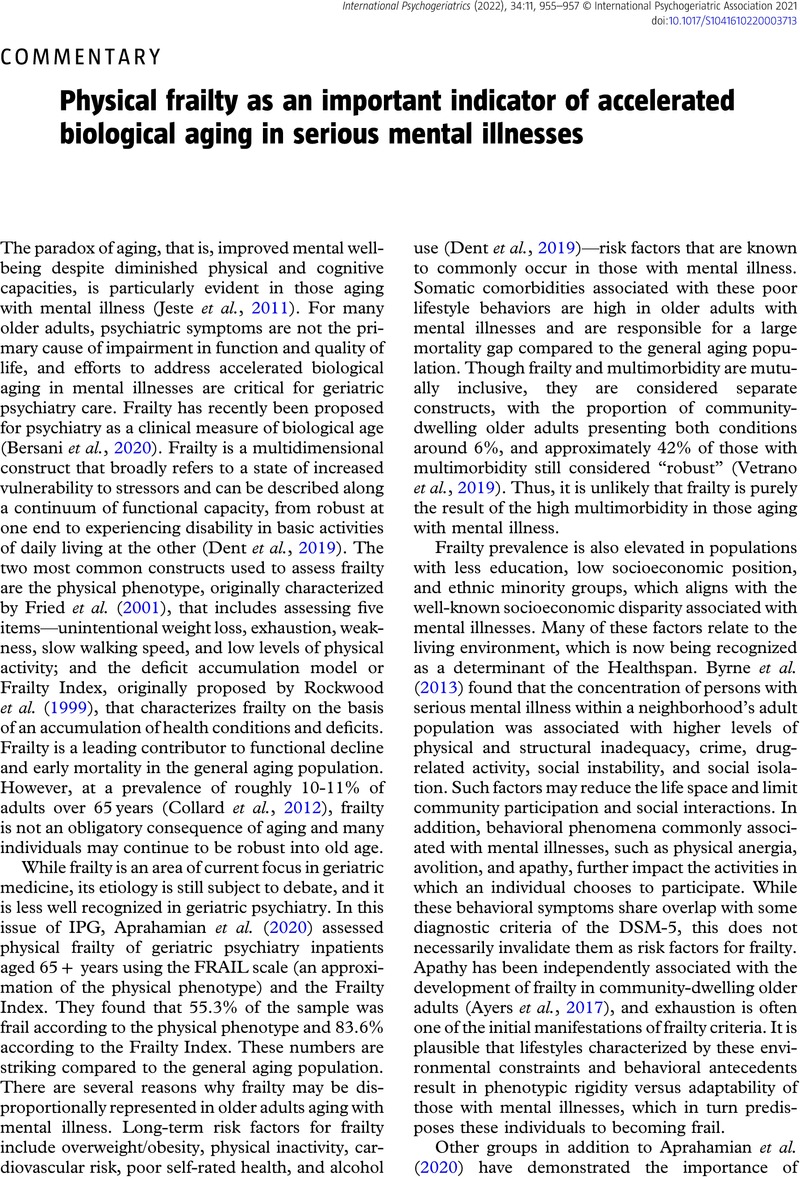Crossref Citations
This article has been cited by the following publications. This list is generated based on data provided by Crossref.
Jeste, Dilip V.
2022.
Caring for older adults with disabilities.
International Psychogeriatrics,
Vol. 34,
Issue. 11,
p.
941.
Sciacchitano, Salvatore
Carola, Valeria
Nicolais, Giampaolo
Sciacchitano, Simona
Napoli, Christian
Mancini, Rita
Rocco, Monica
and
Coluzzi, Flaminia
2024.
To Be Frail or Not to Be Frail: This Is the Question—A Critical Narrative Review of Frailty.
Journal of Clinical Medicine,
Vol. 13,
Issue. 3,
p.
721.



